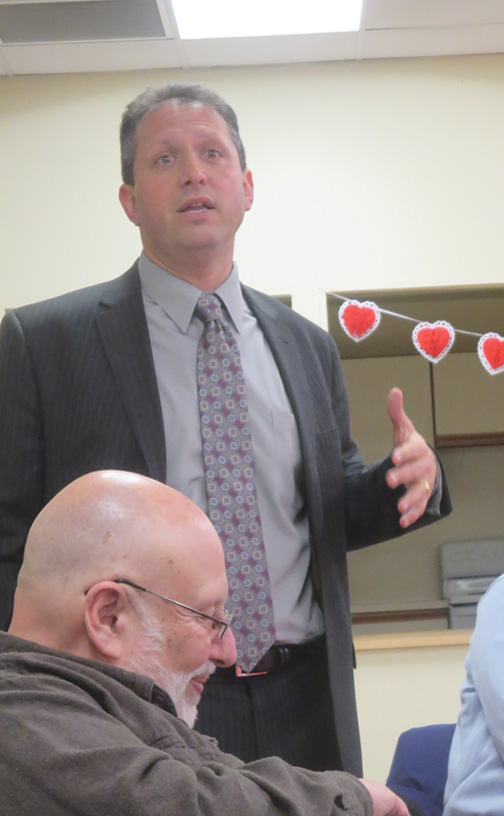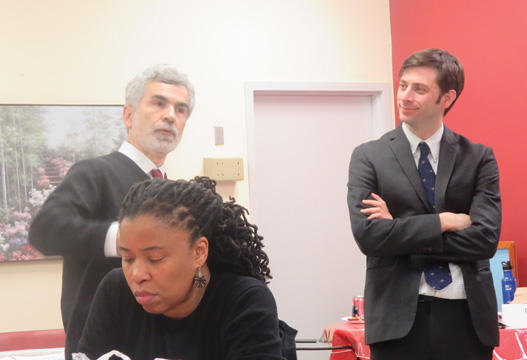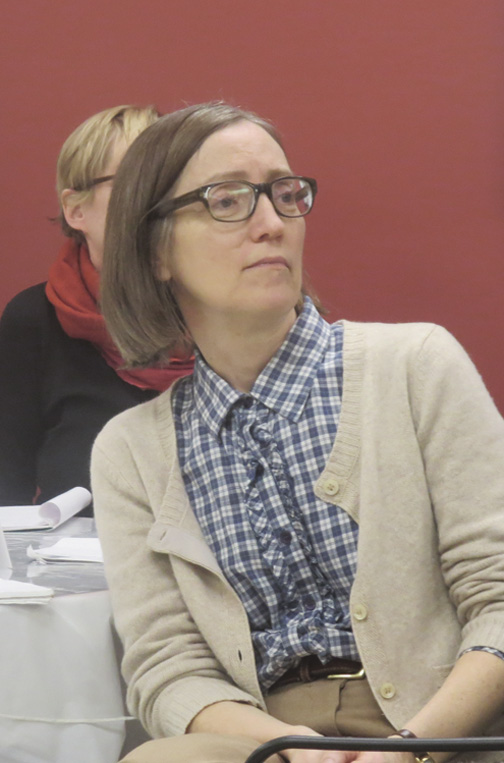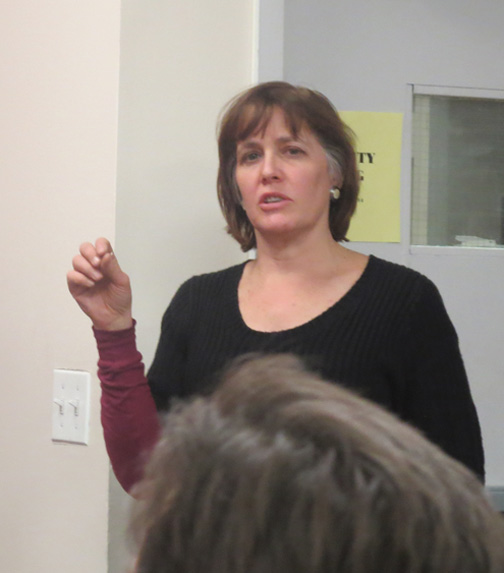The Gowanus Community Advisory Group (CAG) meets monthly to discuss issues pertaining to the Canal Superfund cleanup. At its February 25 meeting, local councilmen Steve Levin and Brad Lander appeared by invitation. The CAG consists of sixty members, many of them representing local groups, such as the Red Hook East and West Tenants, the Red Hook Civic Association, the Cobble Hill Association and many others. Other members are at-large – those in the community with an interest in the cleanup. These monthly meetings are open to the public, and are announced on the CAG website – www.gowanuscag.org, as well as on the Star-Revue online calendar (www.redhookstar.com). Guests often include representatives from the NYS Department of Environmental Protection (NYS DEP), National Grid (who are paying for much of the cleanup), City Planning and local politicians.

The meeting began at 6:30, and, as the politicians had not yet arrived, committee reports were heard. The only committee that actually met during the month was Outreach. A committed gang of five members made an 8:30 am meeting on the day of one of those highly touted snowstorms that have dotted this winter. Among the achievements, as reported by Ariel Krasnow, was a further updating of the CAG website, and a discussion of a CAG logo and tagline.
CAG facilitator Doug Sarno reported that in accordance to a request from Christos Tsiamos, chief engineer on the Superfund project, a letter was sent out to the DOT requesting expedited repairs to the Union Street, Carroll Street and First Street drawbridges. This bridges have been out since Sandy, and are needed by the Superfund once the dredging of the canal begins, as tugboats and barges will be traveling up and down the canal. Tsiamos said that he in fact had met with DOT officials and received the good news that funding to repair the bridges had been obtained, and work on them will be expedited.
Marlene Donnelly, representing Friends and Residents of Greater Gowanus (FROGG), asked about a recent permit request by NYC to dredge the Gowanus, when this is already to be done by the EPA. It turns out that this request was made in 2004, prior to the entrance of the EPA, and was mandated by the NYS DEP. It has just now come up for a public hearing, and the DEP representative explained that the state and the EPA are working this out this apparent duplication. The representative disputed Donnelly’s fear that this represented a NYC attempt to undermine the EPA’s work.

Councilmember Stephen Levin arrived at this point, joking that his district includes two Superfund sites, and that he had to arrive earlier than Councilmember Lander as he needed to rush off to the Newtown Creek CAG meeting later that evening. He assured everyone that he was fully supportive of Superfund, saying that he was glad that we were “doing the right thing now, so that we’re not coming back in 50, 100 or 150 years.”
His major issue had to do with the location of two retention tanks mandated by the EPA’s Record of Decision (ROD). These oversized tanks are required so that future sewer overflow occurring during rainstorms are diverted to the tanks instead of the Gowanus, which will prevent recontamination. He noted that the new city DEP commissioner, Emily Lloyd, is fresh from two years as head of the Prospect Park Alliance. He said that her knowledge of both Superfund and the neighborhood will make her a good partner in the years ahead.
Double D Pool
There has been controversy concerning the Double D swimming pool. The EPA had suggested that in view of the fact that toxicity had been found under the pool, it might make sense to locate the tanks there, accomplishing two tasks at once. The neighborhood protested, and Tsiamis made clear that his was only a suggestion – the city could site the tanks wherever they wanted to. The deadline for coming up with a location is July 1st.
Levin spoke about the possibility that the pool might be closed for the work. He wanted to bring attention to the fact that plans must be made to restore the pool afterwards. He pointed out that these pools are expensive to rebuild. McCarren pool, also in his district, cost $50 million to renovate. Double D is smaller, but still could take upwards of $20 million to restore. He reminded the CAG that he successfully fought budget cuts which threatened to close the pool five years ago, and that “kids use that pool.”
He said that his job will be to make sure that the city will be a good partner when it comes to the park, and that the money will be there to reopen it, if it comes to that. He is not for and not against the placement of the tanks there. “If that happens, I want to be sure that the amenity is protected or replaced in kind.” He stressed that plans to reopen the pool are in place before the pool is closed – whether the money comes from the city or the Potentially Responsible Parties (PRP’s), who are paying for the cleanup.
With these points made, Levin excused himself and rushed out the door to his next meeting, accompanied with applause.

Lander had not yet arrived, so Christos gave a good report of his walk through the area with city officials. This was the first of multiple meetings he is having with the city in search of a place to site the retention tanks. He was happy with the progress, and a second meeting was already scheduled.
Someone in the audience suggested that a meeting with the new DEP commission Lloyd would be helpful in forging a relationship with the new administration. The committee remembered that as city councilman, de Blasio was against the Superfund designation, siding with the Bloomberg administration and the Toll Brothers, who had been planning a development by the Gowanus.
At 7:45, Councilmember Brad Lander arrived. Lander has been instrumental in a Gowanus series of planning meetings that he called “Bridging Gowanus.” CAG members the previous month wondered why the CAG wasn’t consulted for these meetings. This was the impetus to invite the politicians. Red Hook’s councilman Carlos Menchaca was also invited, but was a no-show.

Bridging Gowanus
Lander spoke in general terms about the goals of Bridging Gowanus and hoped for good relations between the groups. It was pointed out to him that they should understand that any new developments along the Gowanus would be subject to compliance with EPA standards preventing the introduction of new pollutants into the canal. “The EPA is not going away,” someone in the audience commented, referring to the fact that they will continue to monitor the canal even after the cleanup is finished. Recontamination is a huge concern, which is why the sewage overflow problem requires the retention tanks, as per the ROD. Tsiamis has said in the past that anyone planning a real estate or other development in the area will be informed that if they are found repolluting the canal, they will be treated as PRP’s themselves, and will have to fund a cleanup.
Lander was interested in this, and suggested adding an “E” to the zoning. He said that his office will be looking into this. He ended up by speaking of “tradeoffs and challenges” in the continuing development of the Gowanus neighborhood.








